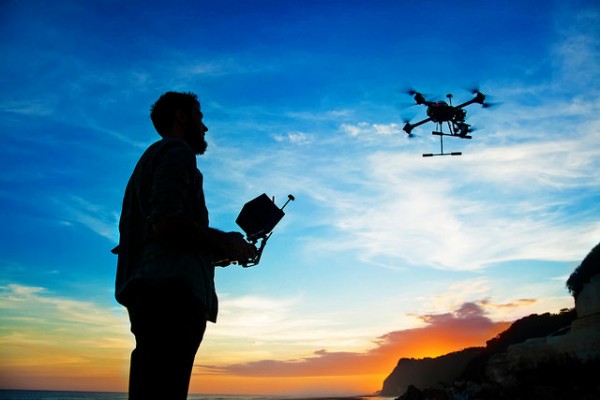By April Kirstin Chua, | March 08, 2017

Drones Could Help Pollinate Future Crops, Robotic Bees Considered As An Alternative
It may seem ludicrous but drones could, in the future, help pollinate crops. A research was made to find the possibility of drones working side by side with bees to improve crop yields.
About three-quarters of crops all over the world rely on pollination by bees and other insects. The problem is that bees are becoming scarce due to pesticides, land clearing and climate change that creates problems for farmers.
Like Us on Facebook
According to New Scientist, pollination is needed for reproduction in flowering plants. Cross-pollination, on the other hand, requires the transfer of one pollen from one plant to another. This relies on pollen stuck in the bodies of bees when they feed on flowers then deposit it on the next plant the bees visit.
Eijiro Miyako at Japan's National Institute of Advanced Industrial Science and Technology, together with his colleagues, have used the principle of cross-pollination in bees to make drones that transfer pollen between flowers. "We need pollination," he said. "If that system is collapsed, it's terrible."
Miyako bought 10 kiwi-sized drones to test his theory and taught himself to fly the "robotic bees". He covered the bottom of the drone with short horsehair, using electricity to make the hair stand up, the Science News has learned. Adding the gel worked like magic as it made the horsehair seem like bee fuzz.
The result is a manually controlled drone that measures four centimeters wide and weighs 15 grams. The pollen grains stick lightly to the gel then rub off on the next crop visited when the drones fly onto the crops. The robotic bees could cross-pollinate Japanese lilies during one of the experiments. Also, the soft and flexible bee fuzz hairs did not damage the stamens or pistils when the drones landed on the crops.
"We hope this will help to counter the problem of bee declines," Miyako said. "But importantly, bees and drones should be used together." Together with his team, they are now developing autonomous drones that could help farmers pollinate their crops.
High-end and developed technology such as GPS, high-resolution cameras, and artificial intelligence will be needed for the drones' performance. Such will be required so that the robotic bees could independently find its way between crops and land on them correctly.
A professor in Australian National University realizes the use of drones as an intriguing idea but it is not economically feasible. He said that the scale on which the farmer would operate the robotic bees is overwhelming.
He further cited an example of an orchard that stretch for kilometers and each individual tree can support 50,000 flowers. Drones are not the only solution to the decline in bees as several strategies are currently being pursued, per the Australian professor, but Miyako believes that the robotic fees are not science fiction.
-
Use of Coronavirus Pandemic Drones Raises Privacy Concerns: Drones Spread Fear, Local Officials Say

-
Coronavirus Hampers The Delivery Of Lockheed Martin F-35 Stealth Fighters For 2020

-
Instagram Speeds Up Plans to Add Account Memorialization Feature Due to COVID-19 Deaths

-
NASA: Perseverance Plans to Bring 'Mars Rock' to Earth in 2031

-
600 Dead And 3,000 In The Hospital as Iranians Believed Drinking High-Concentrations of Alcohol Can Cure The Coronavirus

-
600 Dead And 3,000 In The Hospital as Iranians Believed Drinking High-Concentrations of Alcohol Can Cure The Coronavirus

-
COVID-19: Doctors, Nurses Use Virtual Reality to Learn New Skills in Treating Coronavirus Patients







